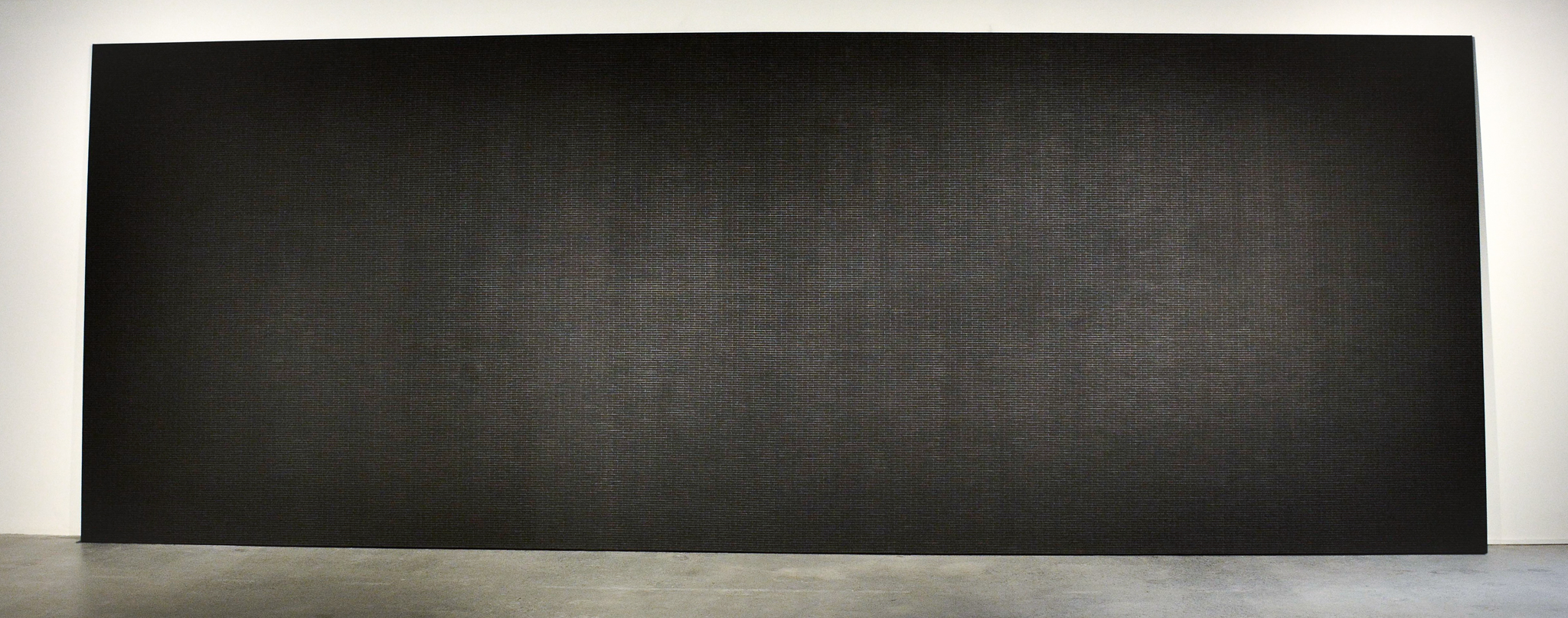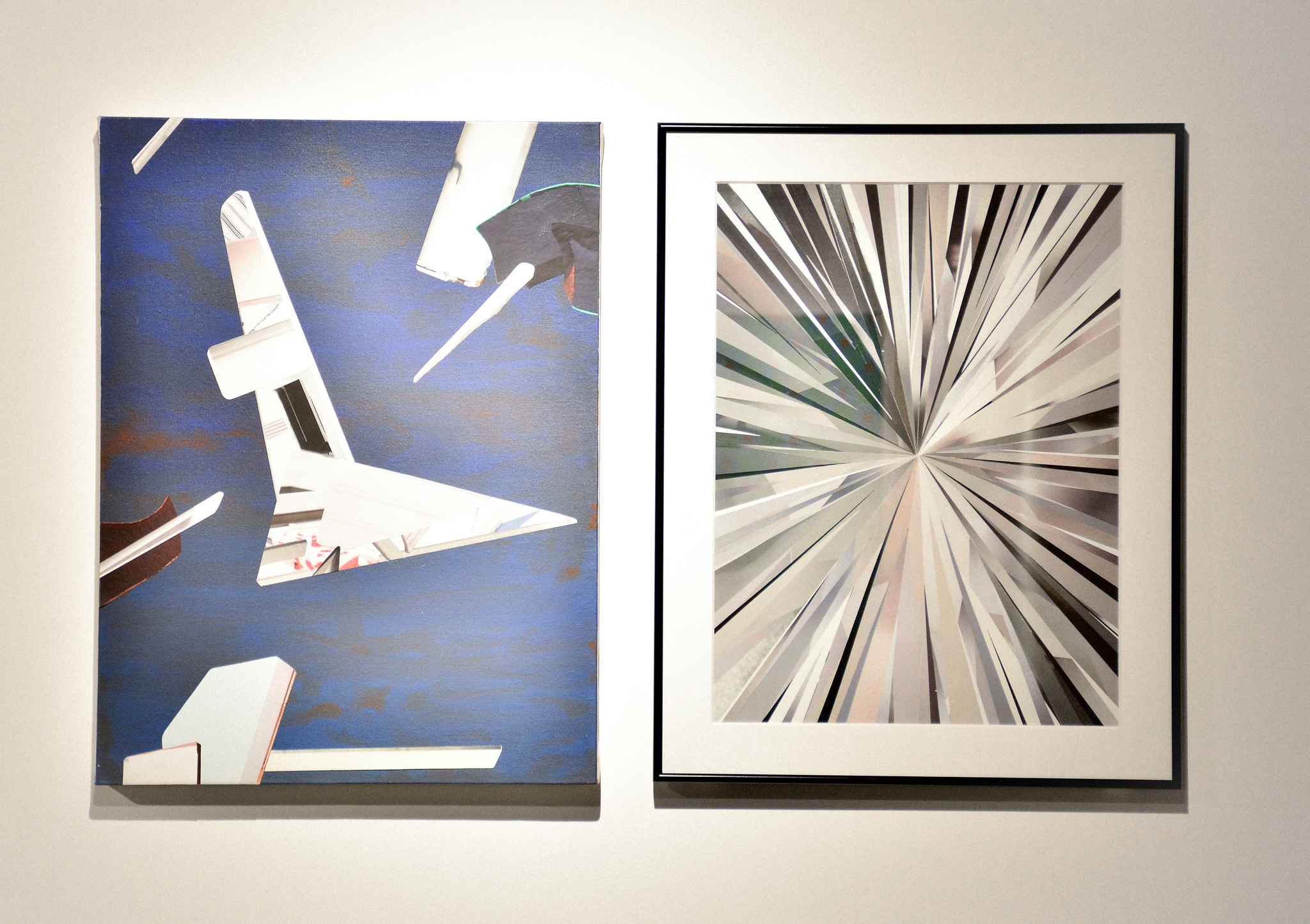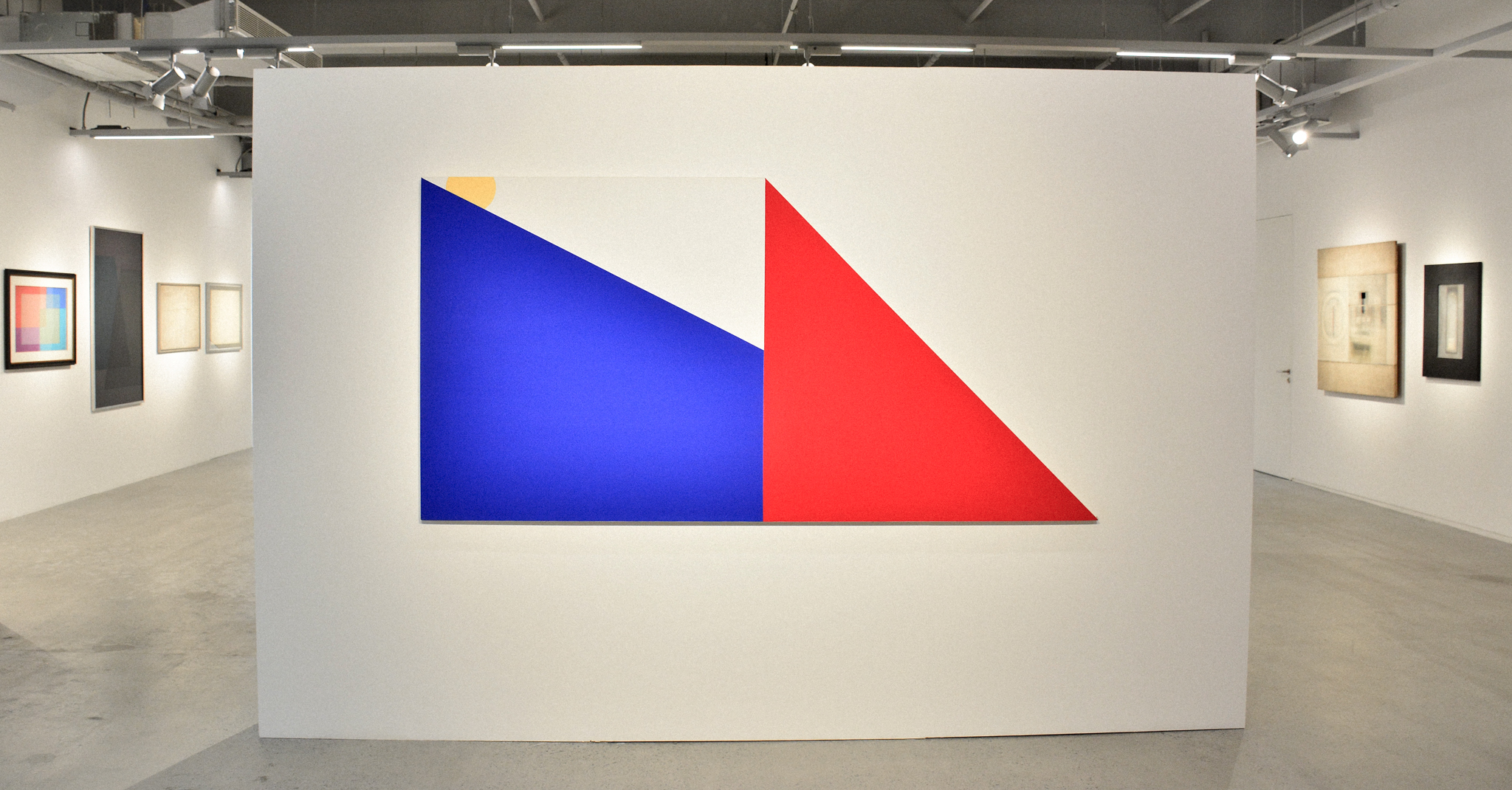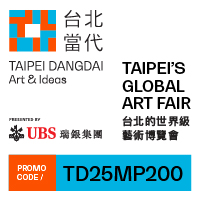Elusive Edge: Philippine Abstract Forms
By Sean Carballo

MARIA TANIGUCHI, Untitled, 2018, acrylic on canvas, 289.6 cm x 792.4 cm, "Elusive Edge" at the Metropolitan Museum of Manila. Silverlens Galleries Collection. Courtesy Metropolitan Museum of Manila.
Elusive Edge: Philippine Abstract Forms
Metropolitan Museum of Manila
Jun 13–Aug 31, 2023
What purpose does lineage serve with regard to understanding abstract art?
One might reasonably argue that any artistic lineage is fraught, given how it
institutes a trajectory that often parcels complex, thorny movements and
counter-movements into tidy, simplistic compartments. Others might argue that
abstract art struggles against such direct historical framing. To abstract,
after all, is to excise. It is the work of distillation, the process of
extracting the material of lived experience until what endures is a flash of
feeling, an energy beyond imagery.
Taken on these terms, it is no surprise that some consider abstract art as
an evasive, slippery art, prone to antagonisms across cultures and political
orientations. “Abstract art is attacked as the enemy with such a passionate
urgency,” art historian Alice Guillermo wrote in a 1983 essay, alluding to
accusations of escapism and conservatism allegedly inherent to the practice. To
couple lineage and abstraction, then, at least on the surface, seems like a
thankless task.
“Elusive Edge: Philippine Abstract Forms,” curated by critic and professor
Patrick D. Flores, alerted audiences to abstract art’s traits but only as a
foundation for scrutinizing what exactly constitutes this broad concept.
Displaying a loose genealogy of works from the 1960s to the present day, the
exhibition served as an appraisal of abstract art in the Philippines, bringing
into focus its manifold configurations—from Arturo Luz’s relief carvings on
plywood and Ramon Orlina’s glass sculptures to Gary-Ross Pastrana’s sharply
defined collages and Maria Taniguchi’s brick wall installation—as a tactic for
encountering a new abstraction’s historical, though assuredly not linear,
trajectories.
The sweeping scope on display suggested that Filipino artists, deploying
abstraction to sift through their own artistic preoccupations, have always been
attentive to the effort of mediation, or, as Flores put it, “how the
Philippine artistic ecology and intelligence decisively responded to the
abstract aesthetic, conversing in both its international and vernacular
registers.” Lineage, as the show understood it, does not tread a straight line
but teeters, falls back on itself, reorganizes, and shuffles back to its feet
again.
,%20Metro%20Series%20(Tunnel).jpg)
GARY-ROSS PASTRANA, Untitled (Flight), 2021, collage and acrylic on canvas, 61 cm x 46 cm, and Metro Series (Tunnel), 61 cm x 48 cm, "Elusive Edge" at the Metropolitan Museum of Manila. Silverlens Galleries Collection. Courtesy Metropolitan Museum of Manila.
Flores’s attitude to curation in “Elusive Edge” was speculative rather than
prescriptive. And despite the exhibition’s formidable framework, encompassing 85
works organized into five clusters, Flores offset this intricacy by
undergirding the show with questions that catalyzed his thinking. Why is
abstract art so often pitted against figurative art? How have artists unsettled
such rigidities? Can abstract art acquire an ethical position? What does a
Filipino expression of abstraction look like? These inquiries, sparked by
Flores’s probing intellect, became the generative ground for the
exhibition.
Such extensive inquiry gave the works a chance to converse with one another
in unexpected ways. There was a fidgety spirit animating the show,
providing thrust and physicality as we were shuttled through one piece after
another. The show asked—no, demanded—that we confront color as a snarl of energy,
transfiguring and shapeshifting into forms bounded and unbounded. Jess Ayco’s
sensually apocalyptic reds in Untitled (1970) came into fierce contact
with the much more geometric and stable variations in Lamberto Hechanova’s Homage
to Julie (1968). Likewise, repetitions of black emerged as either
unsettlingly pensive, as in Nice Buenaventura’s charcoal triptych Ditto
Studies 1–3 (2017), or tranquil to the point of hypnosis, as in Maria Taniguchi’s
brick painting Untitled (2018).
In one section of the show, which tracked the development of hard edge and
color field approaches, jolts of color were sublimated into monochromatic,
razor-like forms, such as in Leo Valledor’s A.I.R. (Artist in Residence) (1981).
Altering the Philippine flag’s shape until it is transformed into a sharpened
structure, making no distinguishable hierarchy between the blues and reds
(symbols for peace and war respectively), Valledor, a Filipino born in San
Francisco, grafts questions of national history and diaspora onto the very
activity of abstraction. A mediator himself, Flores showcased throughout
“Elusive Edge” the instances in which practitioners of the abstract form have either clung to tradition or chosen to deviate from it. Conveying this dynamic of hold
and release, the exhibition was an encompassing and purposeful feat, a
remarkable proposition of abstraction and its decisive fusions.

LEO VALLEDOR, A.I.R. (Artist in Residence), 1981, acrylic on canvas, 122 cm x 244 cm, at "Elusive Edge" at the Metropolitan Museum of Manila. Lina Juntilla Collection. Courtesy Metropolitan Museum of Manila.







